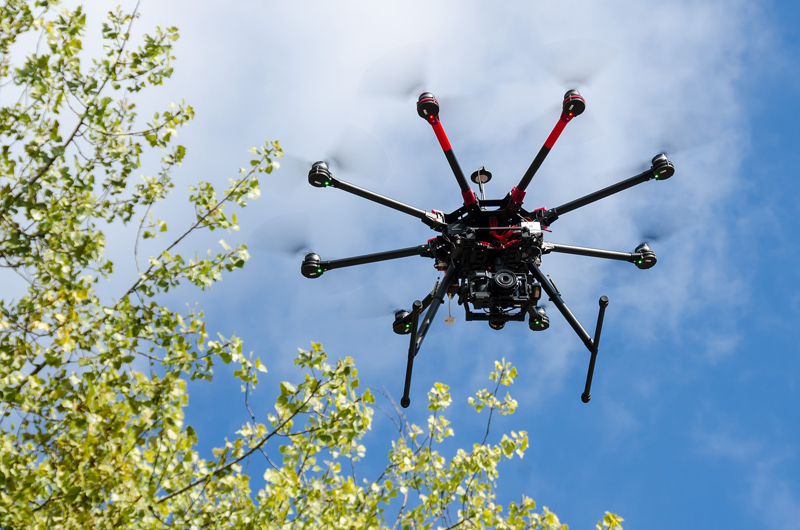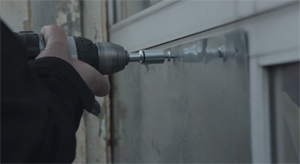 It’s safe to say that 2020 hasn’t been the year any of us predicted, and most businesses and households have been impacted in some way due to the COVID-19 pandemic.
It’s safe to say that 2020 hasn’t been the year any of us predicted, and most businesses and households have been impacted in some way due to the COVID-19 pandemic.
Many property owners – particularly those in the entertainment, hospitality and events industries – have seen their premises become wholly or at least partially unoccupied over the past nine months. Sadly, many will remain closed due to financial losses.
This has sparked an increase in the number of properties and sites requiring temporary and permanent asset protection measures such as security fencing, boarding up, intruder alarms and CCTV.
As Government guidance continues to advise working from home, for non-essential services, the long term future of office-based operations hangs in the balance. Many business owners are facing tough financial decisions, which can mean vacant premises are being left unsecured and at risk of vandalism or intrusion.
Vacant property security specialist SafeSite Security Solutions has analysed the enquiries and installations it has overseen during the pandemic to forecast five security predictions and technology trends we can expect to see in 2021 and beyond.
Risk assessment – with home-working set to be the standard operating model for many businesses for some time, it is likely that we will see an increase in risk assessment and contingency planning – with companies modelling a range of scenarios to inform long-term business planning. The pandemic has propelled many ‘nice to have’ scenarios into ‘must have’ business changes. Site safety and security risk assessments will become even more essential both in terms of protecting unoccupied premises, and supporting the workforce at home. With restrictions around visitors to site, suppliers will have to find new ways of supporting customers with ‘off-site’ surveys and inspections, in order to scope the most appropriate security solutions.
Crime – At the height of the pandemic in England and Wales, the Office of National Statistics reported a significant fall in crime. This was primarily driven by reductions in theft – both domestic burglary and personal theft. The drop was not unexpected given that the data covered the first national lockdown, with the majority of people spending most of their time at home.
However, drugs offences and recorded incidents of domestic abuse have risen during the same period. With unemployment rates set to rise globally and the pandemic exacerbating income inequality, it is not implausible that a continued rise in these types of crimes, as well as antisocial behaviour, may follow over the coming months. This may lead to an increased need for personal and property security measures, and an increased responsibility on employers to safeguard their workforce at home.
 Commercial property – many commercial premises remain closed, with huge swathes of the UK workforce continuing to work remotely from their homes for the foreseeable future. The pandemic has shown that if you can connect from home, in theory it is possible to work anywhere. Companies preparing their long-term business continuity plans will need to consider the physical security of commercial premises left unoccupied, the inclusion of home addresses into threat monitoring, and increased cybersecurity where online collaboration becomes the primary format for information-sharing.
Commercial property – many commercial premises remain closed, with huge swathes of the UK workforce continuing to work remotely from their homes for the foreseeable future. The pandemic has shown that if you can connect from home, in theory it is possible to work anywhere. Companies preparing their long-term business continuity plans will need to consider the physical security of commercial premises left unoccupied, the inclusion of home addresses into threat monitoring, and increased cybersecurity where online collaboration becomes the primary format for information-sharing.
Video surveillance 2.0 – CCTV surveillance systems are a proven intruder deterrent, as well as capturing vital evidence in the event of a prosecution. However, these systems require constant monitoring, which is usually carried out by a dedicated alarm receiving centre. If a security breach is detected a reactive response is initiated. Emerging video technologies can now actively recognise faces, weapons, number plates (and more) using artificial intelligence (AI), enabling a more proactive, immediate response to potential security threats.
New video technologies will also make it possible to monitor harder-to-reach environments such as oil rigs and coal mines. Where hazardous chemicals or extreme temperatures come into play, using traditional video surveillance for monitoring is inadequate. Advancements in rugged hardware will see video cameras that can withstand motion and temperature changes. Improved mobile broadband connectivity will make live-streaming to a smartphone possible. AI analysis can provide access control, fire detection and notify the security response team immediately.
Drones – The US is further ahead of the UK in terms of the use of drones in property and construction, where it has been proven they can be a useful asset – from initial surveying through to real-time inspection (without the need for a ground-based team). Drones are also useful for ongoing site and property maintenance inspections, helping to minimise associated health and safety risks i.e. surveying at height, accessing dilapidated building etc.
The COVID-19 pandemic has paved the way for acceleration in the implementation of new technologies. Drones and 360 cameras have come into their own in terms of being able to capture visual and video graphic data remotely.
The data that is collected by drones can be tagged and overlaid with other information such as product data and maintenance requirements. The technology also provides the functionality to create interactive layout drawings, and this can all be added to throughout the lifecycle of a property. When a building is being sold a whole data package can be made available to the purchaser.
In terms of cost, drones can be expensive. However, they may be able to save property management firms money in the long run. As with all new technologies, drones are likely to become more affordable as the technology becomes more widely adopted, and the market becomes more competitive.
It’s likely that rather than revolutionising property security, drones will help to evolve it, combining with other emerging technologies such as intelligent video. We may also see new legislation emerge around privacy protection.

